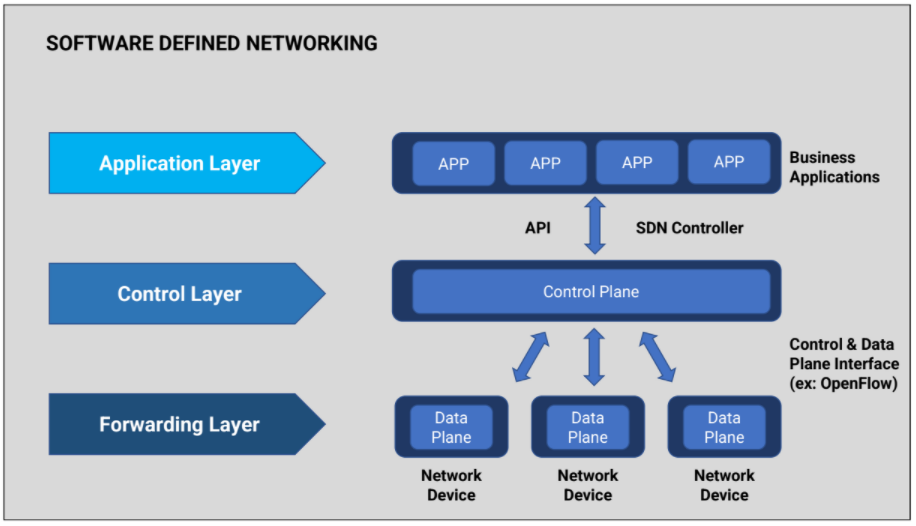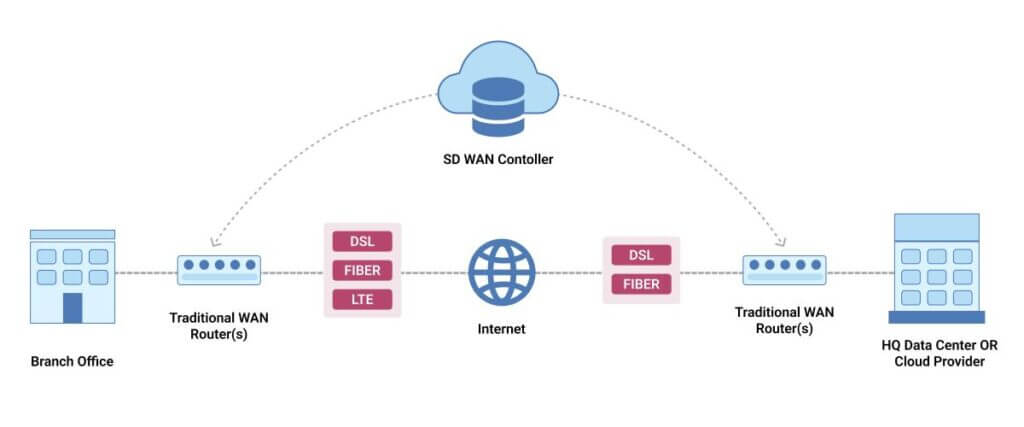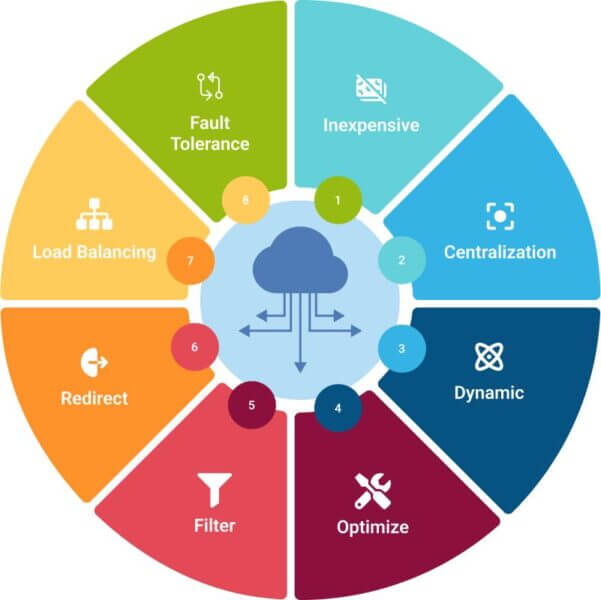Software Defined Networking (SDN)
- Anupam Jagdish Bhoutkar
Software Defined Networking (SDN)
What is SDN?
Software-Defined Networking, or SDN, is a strategy that removes control and configuration from each individual network device and places that responsibility on a controller. When done correctly, a controller-based approach yields the following benefits:
- Automation
- Configuration consistency
- Enhanced software/firmware upgrades (easier, quicker, less downtime)
- Increased visibility into network events
- Cost reduction
- Increased performance
- Real-time remediation of network outages without human intervention
Over the past decade, virtualization has been one of the biggest changes for organizations have ever seen. It has brought about real change in server provisioning by automating and streamlining the technology. However, it is a major setback that network/storage infrastructure was not modernized to keep up with the next wave business challenges like that of cloud computing.
While virtualization completely focused on computer/server workloads, it was less concerned about the storage and network domain. Thus, fully deployed, and functional VMs did not change the traditional networking and storage strategies.
SDN will bring about that flexibility and economy of software to hardware data centers which traditional networking failed to deliver.
Traditional Network:
Networks are getting too big and too complex to manage manually, one device at a time. The average network now has thousands of endpoints connected to countless routers, switches, firewalls, APs, load balancers, and optimizers. Scale alone dictates we cannot continue our current strategy.
Businesses today demand that networking adopts a more agile methodology to keep up with organizational requirements and modern frameworks like AppDev. Any downtime is now frowned upon, even when planned.

By now, SDN sounds like an ideal solution for today’s organizations, but it is important to understand the architecture, benefits, misconceptions, and limitations of it as well.
Businesses today demand that networking adopts a more agile methodology to keep up with organizational requirements and modern frameworks like AppDev. Any downtime is now frowned upon, even when planned.
Architecture of Software Defined Networking (SDN):

SDN architecture separates the network into three distinguishable layers
Application layer: Applications communicate with the control layer using northbound API and control layer communicates with data plane using southbound APIs. The SDN application layer, not surprisingly, contains the typical network applications or functions like intrusion detection systems, load balancing or firewalls.
Control layer: The control layer is considered as the brain of SDN. The intelligence to this layer is provided by centralized SDN controller software. This controller resides on a server and manages policies and the flow of traffic throughout the network.
Infrastructure layer: The physical switches in the network constitute the infrastructure layer.
A traditional network uses a specialized appliance, such as a firewall or load balancer, whereas a software-defined network replaces the appliance with an application that uses the controller to manage the data plane behaviour.
How it works?
Before we define how SDN works, let us briefly touch upon what a switch is made of. A switch is a network device that consists of two components – the control plane and the forwarding plane.
The forwarding plane is that piece of hardware other than the CPU that ensures packets are routed across the network. And now, how does this forwarding plane function?
There comes the role of the control plane where the routing protocols reside and perform their work whose results control the forwarding plane tables and determine how packets are routed.
Thus, in simple terms, SDN is a software that deploys control on the forwarding plane by a writing software that will expand or replace portions of the control plane on the switch provided by vendors like Cisco, Juniper etc. For example, protocols like OpenFlow will help in the evolution of SDN that is not actually tied to any vendor.
We hope this explains how SDN has become an emerging architecture that is designed to manage and support virtual machines and the dynamic nature of today’s applications independent of the physical network.

Different models of Software Defined Networking and Vendors
- Open SDN uses open protocols to control the virtual and physical devices responsible for routing the data packets.
- API SDN uses programming interfaces, often called southbound APIs, to control the flow of data to and from each device.
- Overlay Model SDN creates a virtual network above existing hardware, providing tunnels containing channels to data centers. This model then allocates bandwidth in each channel and assigns devices to each channel.
- Hybrid Model SDN combines SDN and traditional networking, allowing the optimal protocol to be assigned for each type of traffic. Hybrid SDN is often used as a phase-in approach to SDN.
According to Gartner Critical Capabilities for Data Center and Cloud Networking 2020, listed below are some of top vendors of the industry who provides reliable, scalable and robust SDN solutions.


Business Drivers and Challenges

Reduced CAPEX: Centralized intelligence and implementation of logic in switches eliminate the deployment of thousands of switches. Thus, the total cost allocated for maintenance of switches is reduced as well as the total cost of network equipment. A huge chunk of organizations would want to revamp their traditional IT setup and upgrade to SDN for this major reason.
Reduced OPEX: Now, when the network has been centralized, it leaves with just a few points of management. Thus, it will take only very few engineers to manage our new modern network. Moreover, it does give room for better utilization of existing hardware while decreasing the need for more expensive and high-end network equipment.
Centrally Managed: SDN consolidates network intelligence, which provides a holistic view of the network configuration and activity.
Programmable: The ability to directly program network features and configure network resources quickly and easily through automated SDN services.
Deliver Agility and Flexibility: As business and application needs change, administrators can adjust network configuration as needed.
Enable Innovation – Open Connectivity: SDN is based on and implemented via open standards. As a result, SDN streamlines network design and provides consistent networking in a vendor-neutral architecture.
Common Misconception
SDN is a significant architectural change over traditional networking infrastructure. However, the technology does not require you to disrupt your existing network and replace it with entirely new hardware and software resources that constitute SDN. Instead, SDN only reshapes the architecture to enable centralized control with multiple levels of automation across the network.
What SDN is NOT?

- It is not an easy button. Getting an SDN strategy right requires a thoughtful approach with buy-in from the broader technical team and leadership.
- It is not a cure-all. Employing SDN will not “fix” every network limitation or challenge in your current design. In fact, the evaluation process might unearth current shortfalls you need to remediate before embarking on an SDN strategy.
- It is not a magic bullet. Implementing an SDN strategy often requires a deeper understanding of your applications from both a business and technical perspective.
Conclusion
Discussed above are only few of the benefits that SDN offers. SDN along with Network Functions Virtualization (NFV) is the future of networking and there is more to it that has made this concept receive high-octane attention among data center operations. It is indeed a boon that this simple concept finds itself a great fit for multiple Enterprises, IT & Service Providers, Telecom Companies etc.
SDN is a new and disruptive technology in the networking domain. There are several vendors announcing SDN solutions and products every other week. Getting it right can be a daunting task, and to leverage SDN’s benefits and integrate it in present environment requires a niche skillset, knowledge of different vendors, the kind of solutions and level of abstraction offered.
ATMECS harnesses the intellectual capital of its in-house network infrastructure management talent pool in guiding businesses to build, operate, maintain, and optimize complex network environments. Our foundational strengths and expertise in managing large network infrastructures, implementing SDN solutions, network security management services, performing network assessments, providing guidance on compliance management, and running operations centers have helped our customers expand and optimize their network infrastructures in alignment to their strategic needs and objectives.



